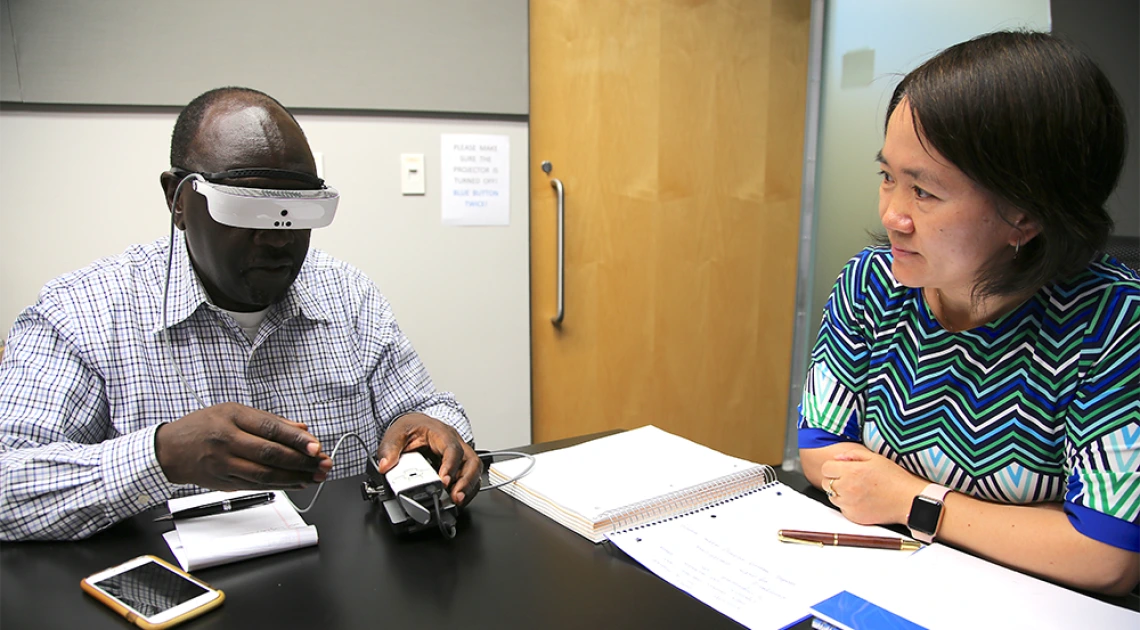UA Inventions Help Legally Blind to See

TUCSON, Ariz. – For those who are legally blind or have impaired eyesight, low vision has an immense impact on an individual’s mobility, independence, ability to function in the world and quality of life.
Hong Hua, professor of optical sciences at the James C. Wyant College of Optical Sciences at the University of Arizona, has become highly recognized for her research in innovative 3D display technologies, complex visualization systems and novel image acquisition systems. Working with graduate student Jason Kuhn, the team developed technology that has enabled the creation of the latest generation of best-in-class near-eye optics.
Working with Tech Launch Arizona, the office of the UA that commercializes inventions stemming from research, the University patented the technologies and licensed them to eSight Corporation, a company that has integrated the inventions into new electronic glasses that deliver the ultimate combination of image quality, field of view, size, weight and cost.
“When I originally met with the eSight team, I was intrigued by the broad social impact of the project,” Hua said. “They said they were developing a system to help low vision people, and the more I listened to them, the more I thought they were doing something really useful and helpful, and I wanted to be a part of it.”
Specifically, Hua and Kuhn developed a wedge-shaped prism eyepiece design with free-form surfaces that provide both high resolution and a large exit pupil – a combination and level of image quality that has not been previously achieved.
In optics, the exit pupil of an eyepiece is a virtual aperture through which light exits a system and projects into a viewer’s eye. Imagine holding a pair of binoculars about ten inches in front of your eyes; the small circle of light you see in each lens is the exit pupil.
In developing a way to deliver a larger exit pupil and wider field of view in a near-eye system, the UA invention provides a larger image and thus more visual data to the brain.
“This is where we see the real-world impact of the leading research being done at the UA,” said TLA Director of Licensing Rakhi Gibbons. “We’re so proud of Dr. Hua and her work, and of the UA’s commitment to contributing to improving lives.”
The end product – eSight 3 – allows individuals with low vision to see, permitting the legally blind to be mobile, thrive at work, study independently and engage in virtually all activities of daily life. The glasses work by capturing images with a small camera, enhancing them, and then projecting them onto screens in front of each eye in real-time, providing more visual data to the brain and triggering an increased reaction from the eye. The glasses also allow users to adjust zoom, focus, contrast and color.
According to eSight Chief Technology Officer Charles Lim, the partnership with Hua and the UA has helped the company be an innovative leader.
He said, "The IP we worked on with the University of Arizona has been critical in allowing us to develop our proprietary best in class near-eye optics that have allowed eSight to deliver the best combination of image quality, field of view, size, weight and cost to help position us as leaders in this space."
According to the company’s website, the glasses restore sight for a majority of individuals with low vision, helping people with macular degeneration, glaucoma, retinal detachment, cataracts, retinopathy and other conditions.

